The Black Dahlia case
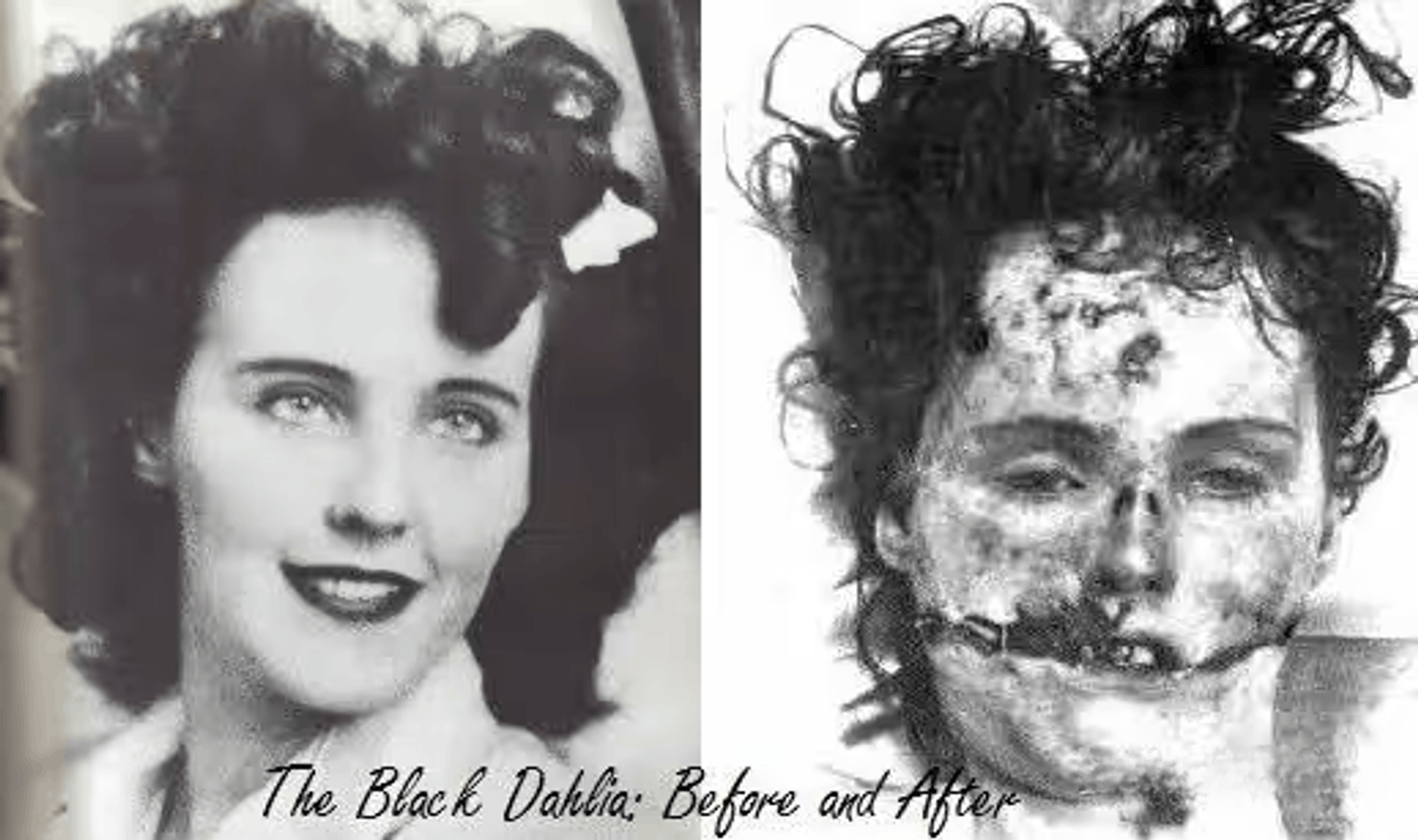
In the history of the United States, there is a terrible crime that remains unsolved. It is known as the Black Dahlia killings.
Let's start with that morning in 1947.
January 15, 1947, 10 am, NORTON Block, 39th Street, residential Center, Los Angeles, California. A housewife named Betty Bersinger was out with her 3-year-old daughter. When they reached 39th and Theater Streets, passing through Leimert Park, the mother thought she saw the disassembled mannequin.
But it's not.
In front of her was the body of a young woman, cut in two from the waist. And the body was placed in a rather strange position -- face up, arms up, elbows bent, legs stretched out more than 60 degrees, as anyone who saw the scene for the first time might have felt -- "she was not treated as a person, but more like an object."
In any case, when she realised it was a corpse and not a model, Mrs Beatty covered her child's eyes and quickly called the police. When the police arrived, they did a more detailed examination:
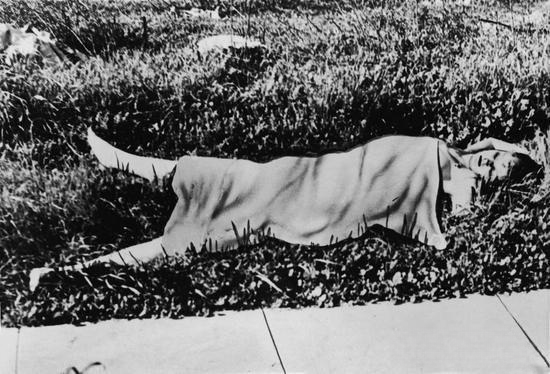
- Head invagination fracture, multiple facial bruises, mouth cut from the corners of the mouth to both sides, mandible and occlusal muscle were cut, wound up to the earlobe, the wound makes the victim's face seem to show a strange smile, like laughing clown.
- There were signs of binding on the upper body, multiple cigarette burns and jagged cuts, the right breast was almost removed, several fingers were broken, and several fingernails were pulled out.
- there are bound wounds at the ankle, the injury area is large, the wound from the bottom up, the victim may have been upside down hanging. Many organs in the lower body, including the uterus, disappeared.
- It cannot be ruled out that the deceased was cut open while still alive. Most of the blood in the body was drained, the body was washed with water inside and outside, and even frozen.
Since the body was washed and refrigerated and then discarded, there were very few effective clues. After filing the case, the police spent a lot of manpower and material resources in the neighborhood to investigate the murderer and look for witnesses, but they found few. Amazingly, more than 30 people came forward and said they were suspects, spending a lot of police to check and find nothing.
Instead, the victim's identity was quickly confirmed: she was a minor star. In the days before DNA testing and computer databases, one of the few ways to identify a victim was to rely on fingerprints, which, fortunately, the victim had been arrested for underage drinking when she was a teenager.
They found her.
Her name was Elizabeth Short.
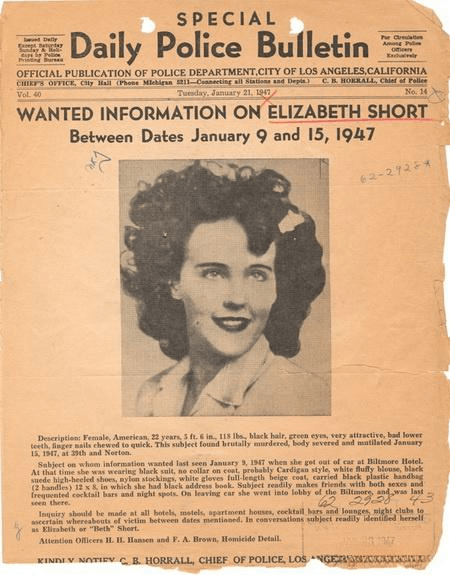
Before this inhuman ordeal, she was an ordinary girl growing up in a single-parent home. In order to escape the debt, the father pretended to jump into a river and commit suicide, abandoned the whole family and went to California. It was not until many years later that he contacted his wife hoping to get back together, but his wife refused. She grew up in a large family of five children, and it was difficult for her mother to take care of her thoughts and feelings all the time.
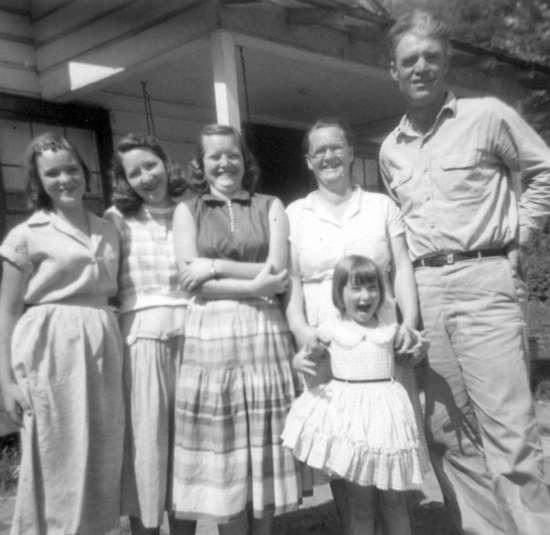
The little girl in the front row is Elizabeth
At 16, she dropped out of school to work as a waitress in Miami. She had the best time of her life because she was so sweet and young. As a teenager, she had two dreams: to marry a soldier (preferably in the air Force) and to become a star in show business.
At the age of 19, she went to California alone to join her father in order to realize her dream of becoming an actress.
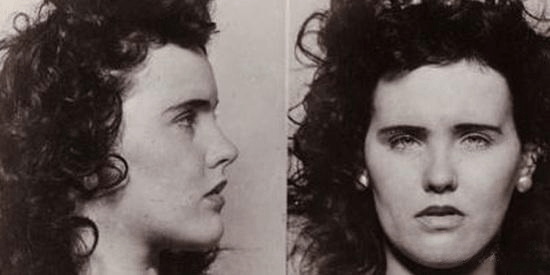
This is her record photo taken when she was arrested for underage drinking as a teenager, and the side face is particularly classically beautiful. But it's easier to feel approachable when you look at life photos. She had all the hallmarks of a mid-century American beauty: a middress slightly above the knee, round shoulders, thick curly hair around a pale face, a dark lipstick in full flow.
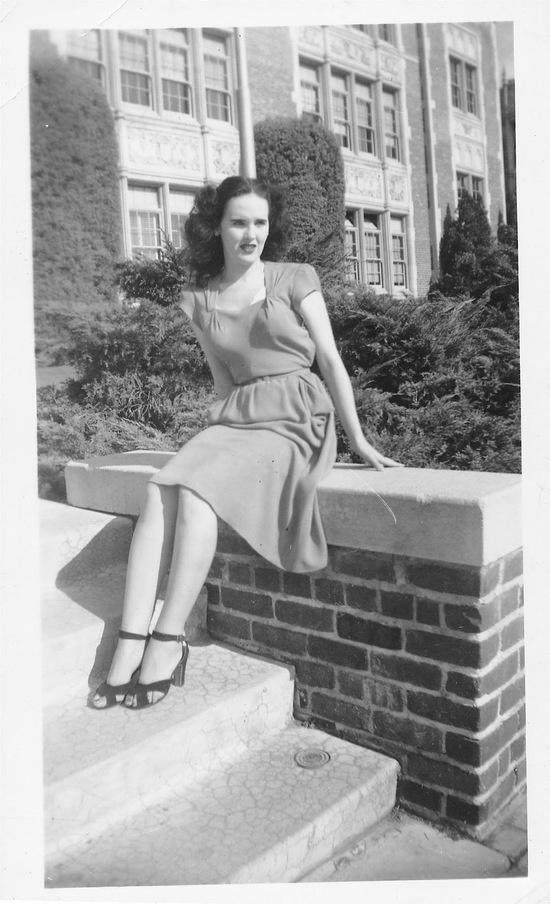
Not long after moving to California, because her father did not like her and the soldiers mixed all day, she was dissatisfied with her father abandoned the family, father and daughter officially broke up. She did get close to the glamorous showbiz career she wanted, but it quickly fizzled out for personal reasons. After this, Elizabeth still indulged in the cheap pleasures brought by alcohol, night out and men's pursuits, as if she was going to go down. Until she met her fiance, Matt Gordon - just like she had dreamed of as a girl, a soldier, a pilot, and a hero to her own.
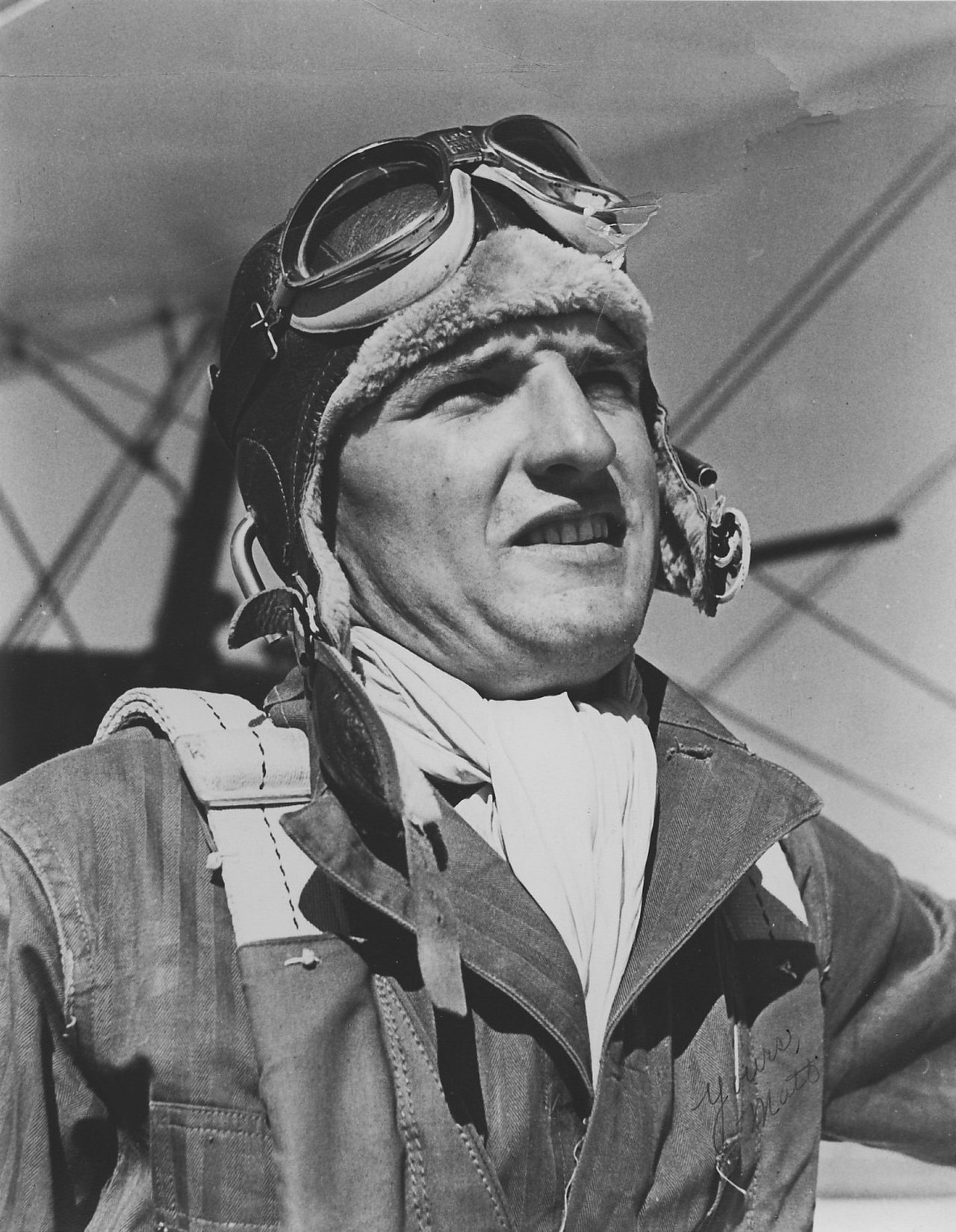
They got engaged.
It was the only real love in Elizabeth's life.
It is impossible to know how the story unfolded, but the only source is a letter she wrote to her mother in which Elizabeth says that it was love at first sight and that Colonel Gordon was "perfect, unlike any other" and told her that he had asked her to marry him. But it was World War II, he was stationed overseas, and she waited with all her heart for his safe return.
But Colonel Gordon never came back.
In fact, Elizabeth waited for a telegram from her fiance's mother confirming that he had been killed.
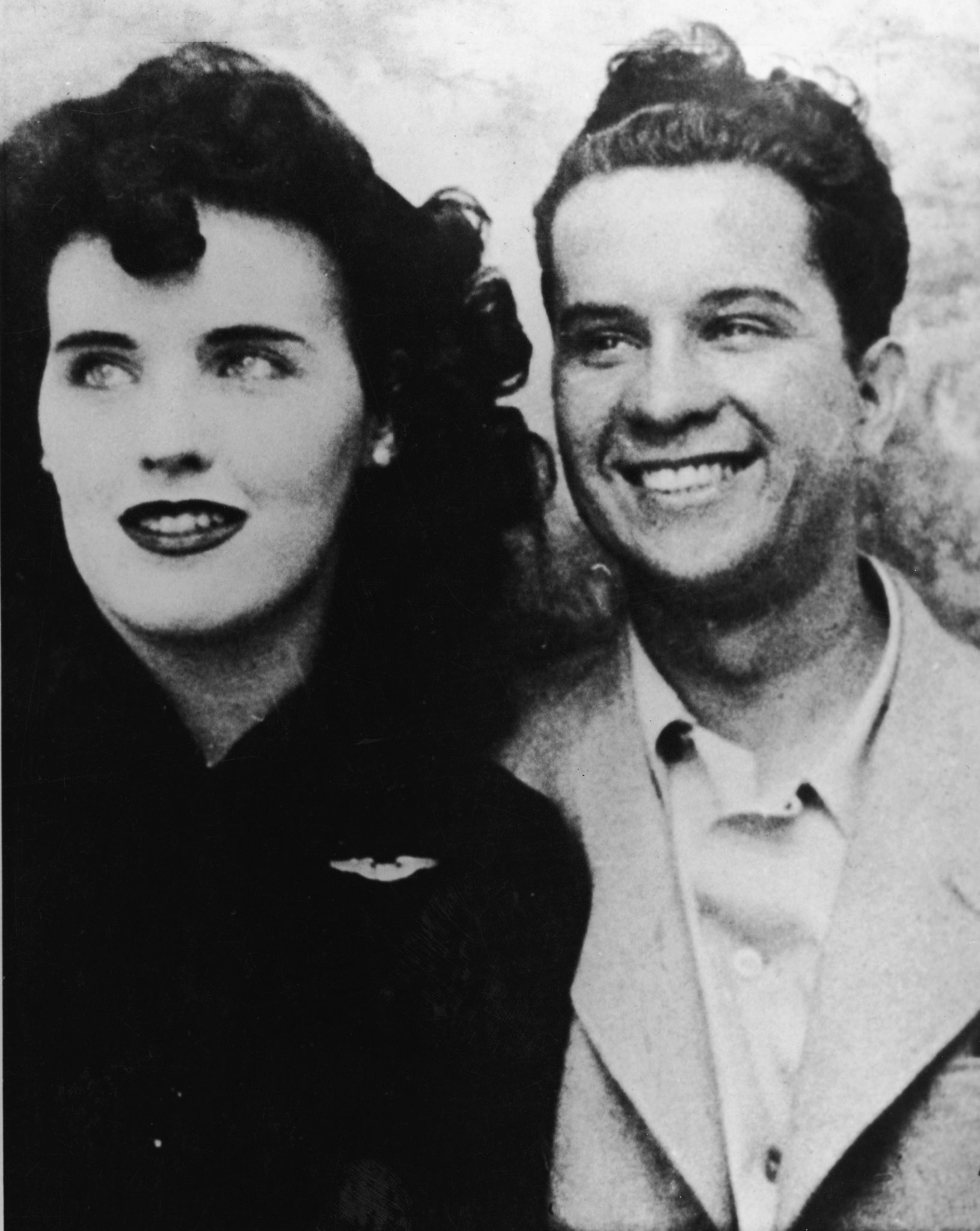
Upon learning of her fiance's death, Elizabeth returns to her former depraved life. More than ever, I should say, she traded her body for food, alcohol, cigarettes, clothing and even a bed for the night to any man who was "interested" in her, and there is evidence that she also occasionally prostituted herself to earn a living.
At the same time, whether it is out of mourning for her fiance, she began to show her extreme love for black, she dyed her hair black, wore black stockings, black underwear, black shoes, and used black bags. People around her began calling her "the Black Dahlia." In the last six months of her life, she lived in a precarious situation... I don't care where I sleep tonight, who I'm with... In other words, she let go of her own safety line, knew it was a cliff, and jumped with her eyes closed.
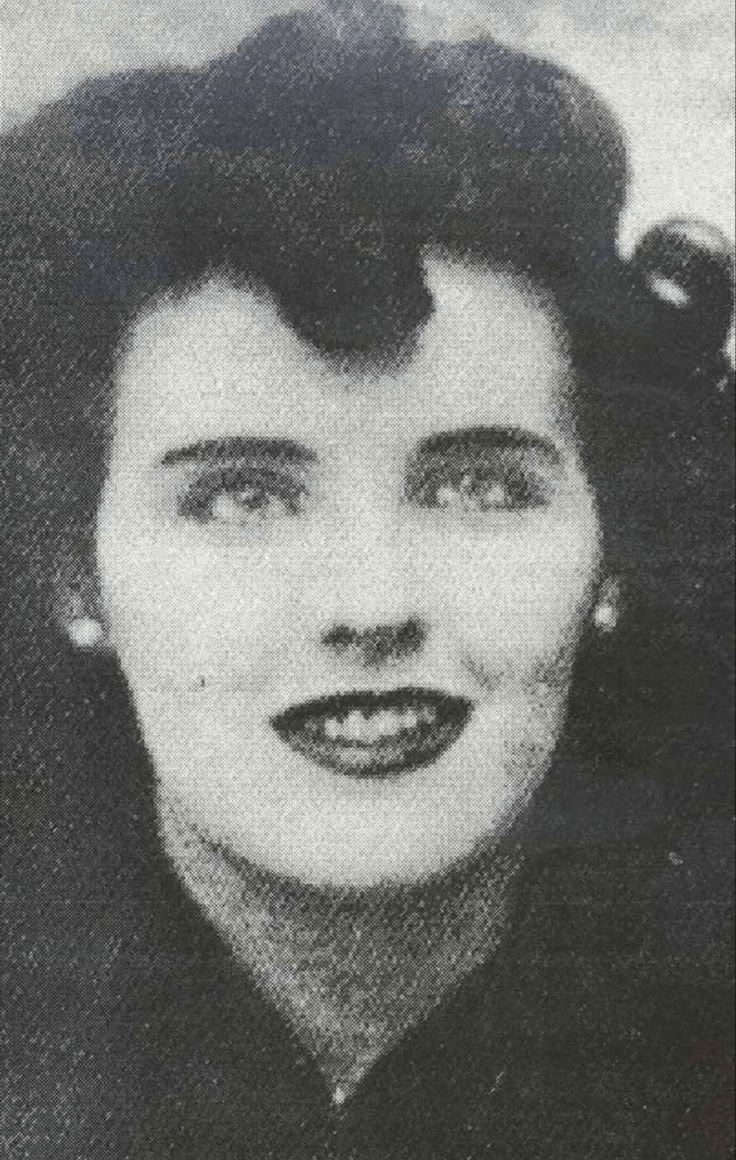
On January 8, 1947, a man she knew received a letter from Elizabeth telling her that she had gone to Chicago to try out for a career as a fashion model-the last letter she ever wrote; On January 9, a salesman named Robert Manley drove her to the bus station for Chicago - the last time Betty was seen alive. She said she was going to Chicago to see her sister, but it is not known if she took the long bus.
That's when the murder happened.
Elizabeth fits the profile of a psychopath: pretty, alone, in need of money, unguarded, not in constant contact with friends and family, and not very capable of resistance. In fact, she herself had been missing for nearly a week when her body was found, but no one reported it to the police.
In her short life, she always wanted to be the center of attention and wanted to be loved, but in fact, no one really cared about her, not even her disappearance.
In the luggage locker of the coach station where she was last seen, she still had the newspaper recording the death of her fiance Gordon in her belongings, and until her death, she could not get rid of his death.
She had lived a miserable life, largely because of her own character, but at least somewhere in her heart she must still be pure and soft.
She didn't deserve what happened to her.
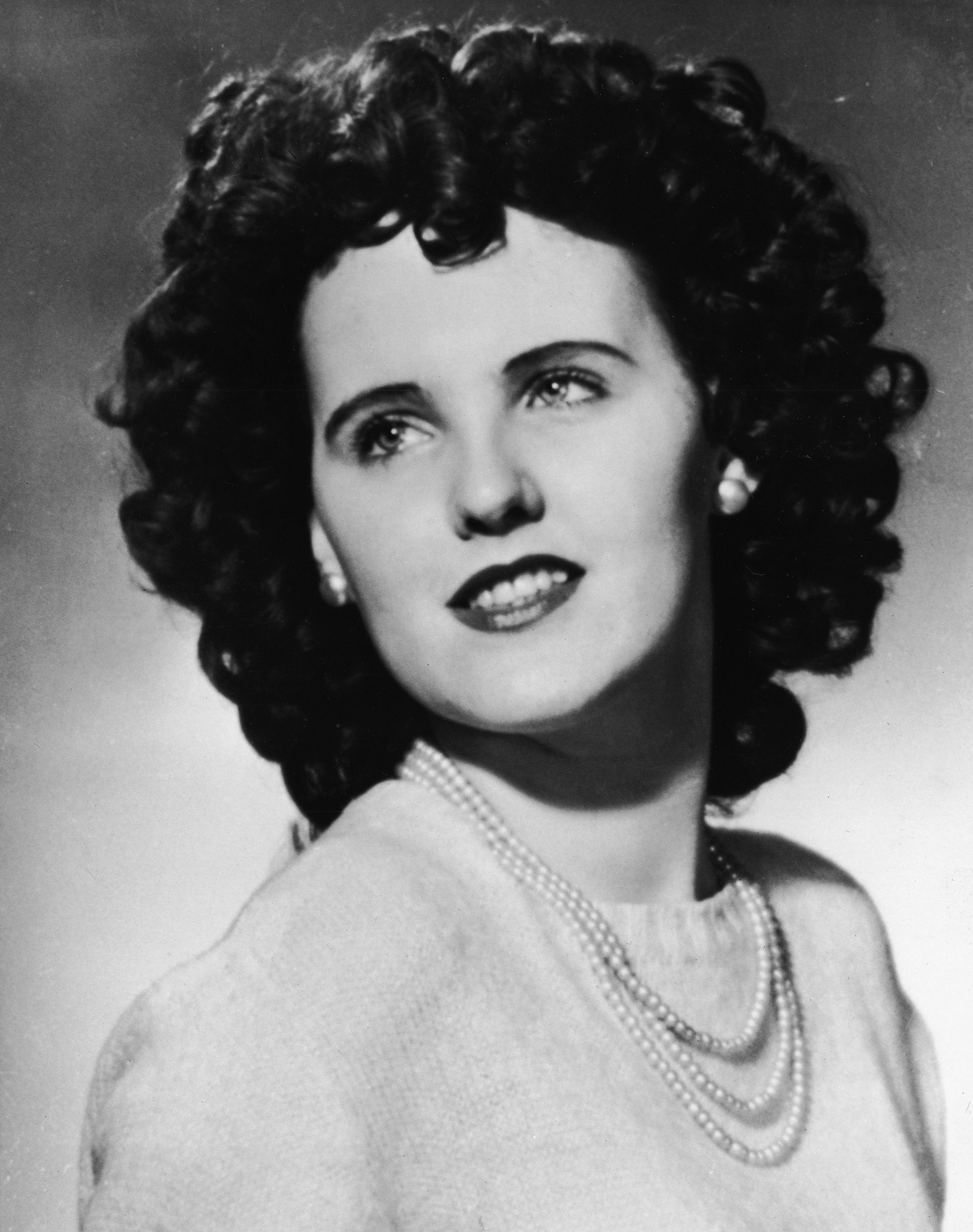
Even so, we may never find the killer: he is supposed to be dead. We do not even know how many cruel things he did to Elizabeth, whether she was tortured alive, whether in the last moments of her life she remembered the smell in the air when she left her home, or whether they finally had to let go of their hands when they said goodbye to their fiance.
The Los Angeles police followed up on the case long after it happened.
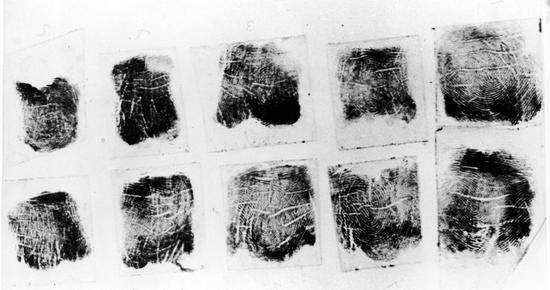
• (Fingerprint evidence taken at the time)
Manley, who Elizabeth met last time, was once listed as a suspect, and after he was sent to a mental hospital for insanity, doctors administered truth serum to him, but instead proved Manley innocent.
In 1986, at the age of 64, Manley died from an accidental fall.
As time went on, the police also believed that the killer was dead and shelved the follow-up investigation. The case will most likely remain unsolved forever.
Nearly 70 years later, there are still occasional flowers placed on Elizabeth's grave.
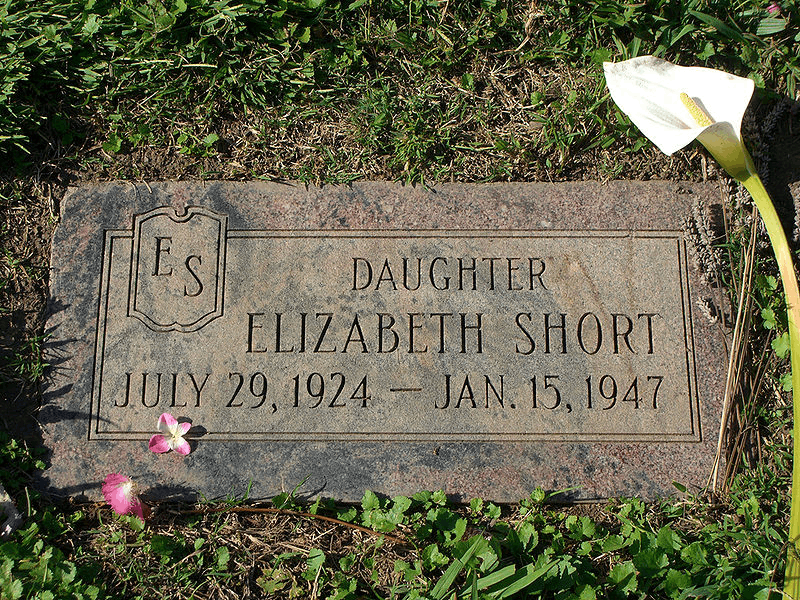
Her story has been portrayed on the screen, painted, and even made up to imitate her mouth cut open. People are obsessed with the evil and ominous romantic feeling brought by the image of the "black dahlia" itself, and they consume the pain she has suffered again and again.

But in fact, Elizabeth's face is far more ferocious than any expression of pain that the living would force on their personality.
She didn't die willingly. She didn't even close her eyes.
